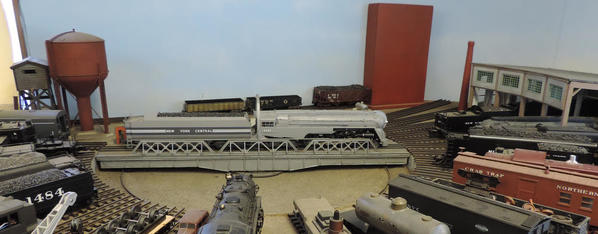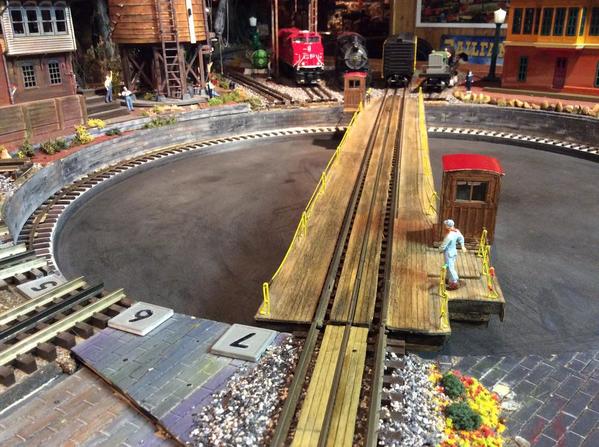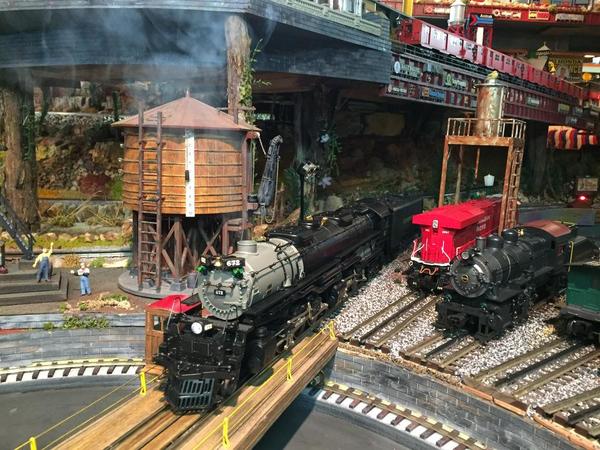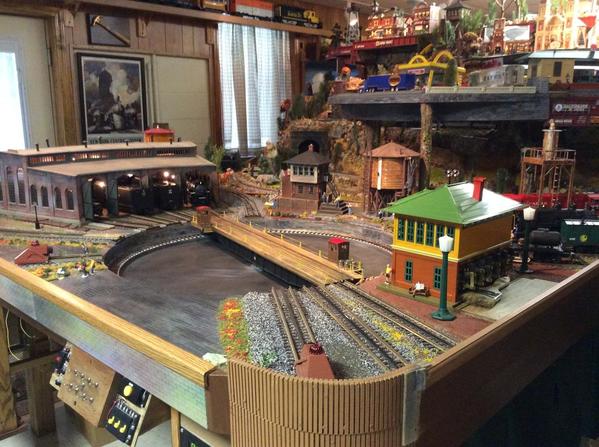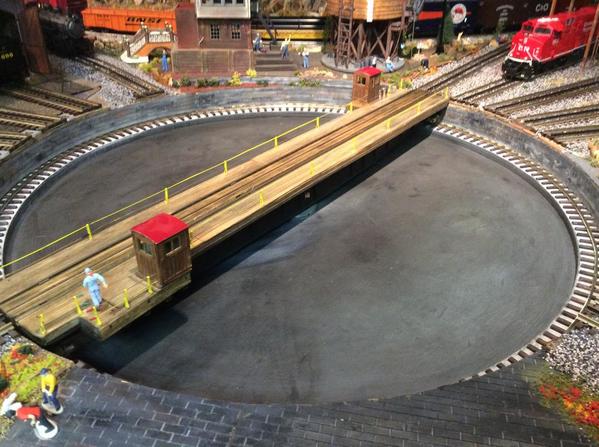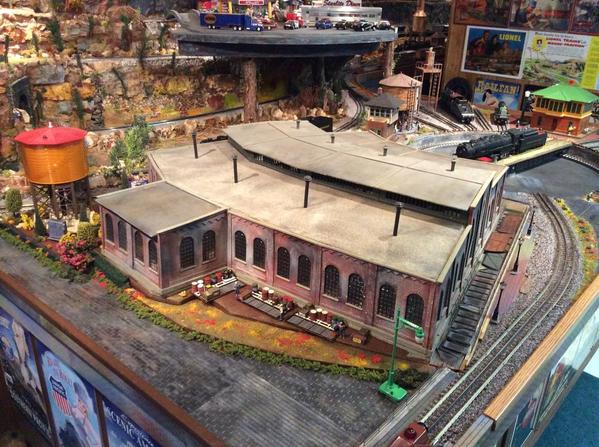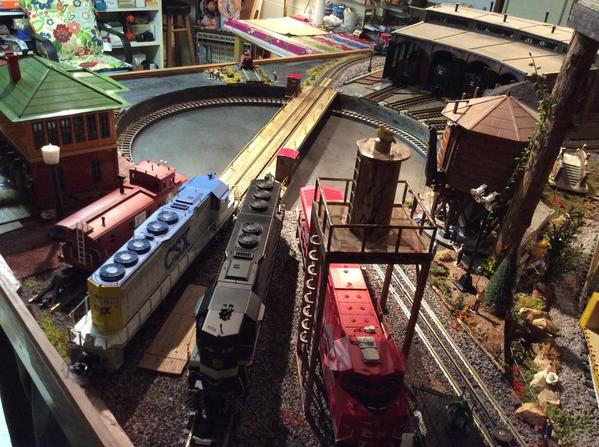A material list for a turntable I built several years ago.
Turntable project slideshow. Have fun with your project . Click on the underlined phrase to link.
. Click on the underlined phrase to link.
Parts list.
Parts List from Diamond Scale. Diamond Scale is under new ownership since I bought my parts in May 2007. MK-111 turntable drive kit (1)
DT-09 turntable dolly trucks, (1) pair (not available) Dolly trucks were fabricated.
CB-30 turntable control cab (1) may not be required if using the Bowser 7902 bridge detail kit.
Bowser turntable parts and detail kits are no longer available.
AK-104 Turntable Arch Kit Angled (1) (not available).
WG-9 Worm and Drive Gear (Boston Gear 1049G) 7/16" bore. (1)required.
WS-87 3/16" X 6" Worm gear shaft (1)required.
B-187 3/16" ID Bronze Bushings (2) required.
SC-187 3/16" ID Shaft Collar (2) required.
B-437 7/16" ID Bronze Bushings (2) required
SC-437 7/16" ID Shaft Collar (2) required.
US-1 3/16" X 1/8" universal drive. (1)
Bowser Trains
#7902 O Gauge Bridge detail kit.
#79417 handrail post. An Additional (20) were required.
Bowser Turntables and detail part kits are no longer available.
Kaplar Lumber.
KP1186-OP24 Scale 10" X 12" .208" X .250" match up to Atlas railroad ties.
KP1126-OP24 Scale 2" X 10" .042" X .208" addition deck material
Plastruct.
#90423 ABS Ladder
Evergreen Scale Models.
#146 .040" x .125" Styrene Strips.
#9077 .015" Clear Styrene sheet
#9040 .040" White Styrene sheet
K&S Engineering.
#91066 1/8" brass angle X .022" X 36"
#92098 3/16" brass bar X 12"
Crow River Products.
#O-56 Scale Electric Winch Kit. (2) required
Atlas.
#6056 40" flex track curved pit rail.
#6058 40" rigid track Bridge rails
#6094 Track Screws.
MSC Industrial Supply/ J&L Industrial Supply.
#607Z Bearing 7 X 19 X 6 mm bearing. (4) required.
Micro Fasteners.
RMB0212 2-56 X 3/4" brass round head screws.
Krylon paint.
#2323 River Rock spray paint
#1602 Ultra Flat Black spray paint
MinWax stain.
#224 Special Walnut. deck stain
Sherwin Williams primer/sealer.
#141-1699 Preprite ProBlock Alkyd Primer/Sealer in spray cans.
Floquil/Polyscale acrylic paint.
#F414137 Grimy Black
#F414329 Railroad Tie Brown
#F404076 Coach Green
Aluminum Ring and bridge sides were fabricated at a local fab shop 1/4" Aluminum sheet.
7/16" drive shaft and "T" bar were fabricated locally.
4' X 8' MDO board local lumber supply.
Premium grade frame lumber local lumber supply.
Miscellaneous hardware and framing screws local supply/hardware.
Construction adhesive local supply.
Wire and connectors, from my truck.




